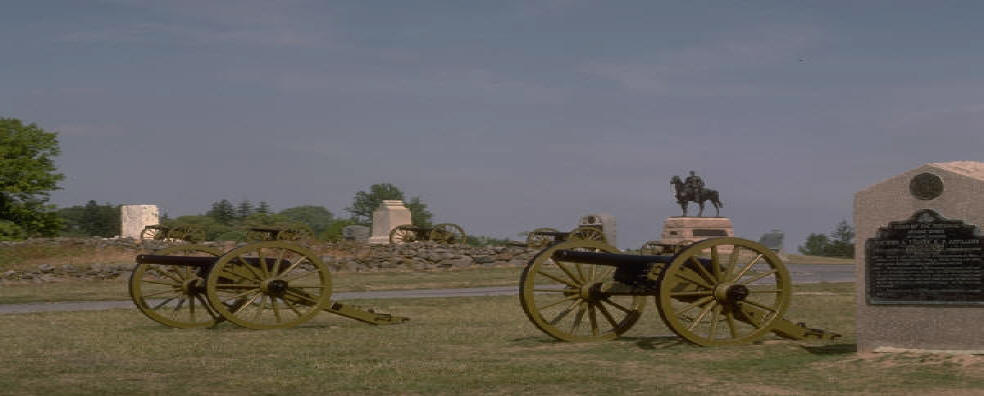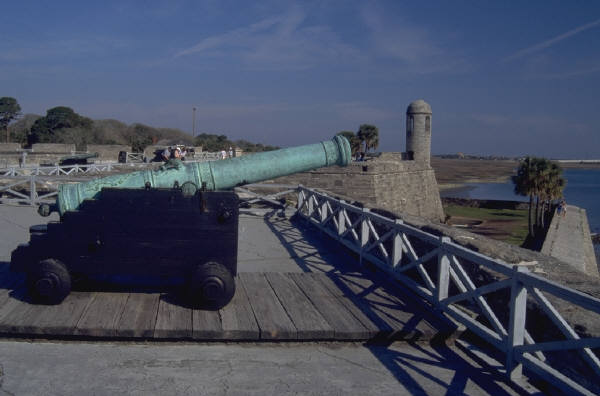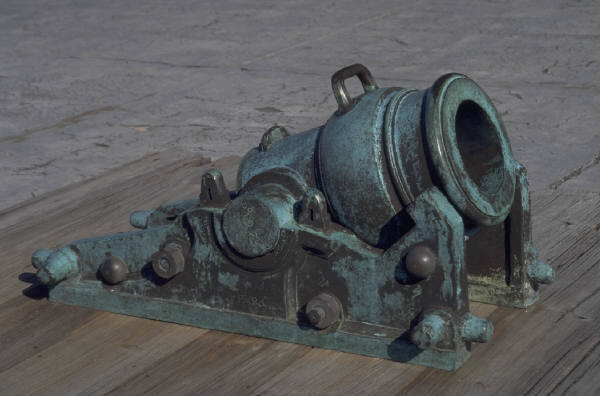Weapons of the Civil War

|
Weapons of the Civil War |
|
|
| When the war started, weapons were very poor. Volunteers were given obsolete weapons as both sides tried to arm soldiers. Later, better guns were obtained in large amounts and became standard for both sides. A basic infantry weapon was the Springfield, made at the Springfield Armory in Massachusetts, were called "Springfields" by the soldiers. 1.5 million of the rifles were made during the war. The rifle had a 39 inch barrel and could hit a target 500 yards away with a .58 caliber bullet. |
| There were also melee weapons. Indians fighting for the Confederates used their own weapons. The tomahawk was changed with the coming of traders from a stone head to a steel head. The Indians also used spears , knifes, and war clubs. Among soldiers on both sides, a popular weapon was the Bowie knife. Bayonets were attached to gun barrel tips and used in fighting and charges. When artillery-men would defend themselves with short-swords based on the Roman short-sword. |
| Handguns in the war consisted mostly of revolvers. There was the Colt Army Model of 1860, a streamlined version of the 1848 dragoon. It was the most popular sidearm during the war because of it's interchangeable parts. There was the Starr Revolver, which had a combustible cartridge, or it could use ball and powder. The most interesting was the Le Mat Revolver, a foreign model that had two barrels: one fired nine .40 caliber bullets and the other was a .63 caliber barrel that had a charge of buckshot. |
| One of the greatest weapons of the Civil War was the Gatling Gun. Richard Gatling, creator of the Gatling Gun, thought that if there was a gun with a high rate of fire, it would decrease the amount of soldiers that had to be on the field, lessening their chances of contracting diseases. This rapid fire gun was used in the U.S. Army for 45 years until it was declared obsolete in 1911. |
| In the 1800s the artillery fought side by side with the infantry. The muzzle loading cannons of the time were attended to by 8 man teams who fired, aimed, and reloaded the cannons. One artillery unit was called a battery, containing 6 cannons and over 100 men, led by a captain. A common cannon was the 12-pound bronze gun. It could fire an explosive shell a mile and canister charges 300 yards. |
| Some fortifications helped in the fighting. The Cheaux-de-frise, ten to twelve foot logs attached to wooden stakes, was one of them. This fortification was put 50 to 100 feet to the front and acted like barbed wire, slowing down or stopping the enemy's advance. With this, the defending infantry could act more efficiently. |
| These are just some of the weapons that took over 620,000 lives in the U.S. Civil War, leaving 50,000 surviving soldiers. The Civil War brought peace to the states but we have to ask ourselves, was it worth it? I'll leave that up to you. |
| Bibliography
Barnett, Bertram: "The Civil War Soldier: Civil War Small Arms" (http://www.nps.gov/gett/soldierlife/webguns.htm) http 5/9/05 N/A "Civil War Weapons" (http://members.tripod.com/~ProlificPains/wpn.htm) http 5/12/05 N/A "The Gatling Gun" (http://tri.army.mil/LC/CS/csa/aagatlin.htm) http 5/12/05 N/A "Civil War Artillery" (http://www.civil-war.ws/artillery/) http 5/12/05 |
| Jordan Goolsby
Eighth Grade American History 2005 Project |
  |